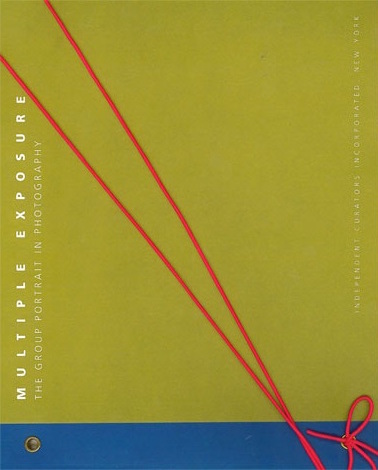
Soft Cover, English, 80 Pages, 1995
Multiple Exposure
availability unknown, if interested please write an email
In albums, or on walls of homes, offices, and schools, group portraits reassure us with a sense of continuity. But then, there’s a paradox, something mysterious lurking within the familiar. The group setting changes the way individuals look and feel. Are they less themselves, or more so?
How does the group affect our perception of the separate figures? Are groups in photographs something more than the sum of their parts? Do they seem to be persons in their own right, perhaps more real than their component parts?
As all photographs, group portraits capture a single moment in time, an infinitesimal portion of a much larger event, and yet a single photograph can still stand as a representation of the entire event. A single photograph can either totally inform or totally misinform the viewer of what was actually occurring during the photograph’s capture. A fleeting glance, a well-timed micro-expression, a sudden change in sunlight can change the meaning of the photograph, and thus the viewer’s understanding of the events taking place.
Thus, when we view a group photograph, we become conflicted. Naturally, we tend to view the group not as a set of individuals, but rather as a single entity for which its components are more like the individual parts of a machine: in context, their purpose and function are clear; out of context, the parts have no meaning. Yet, when looking at these portraits, sometimes harrowing and morose, sometimes jubilant and humorous, the power of each individual radiates from the photograph and we see not one group, but several people. With works by Diane Arbus, André Breton, and James VanDerZee, Leslie Tonkonow explores the paradox, conflict, and beauty of group portraiture.
Language: English
